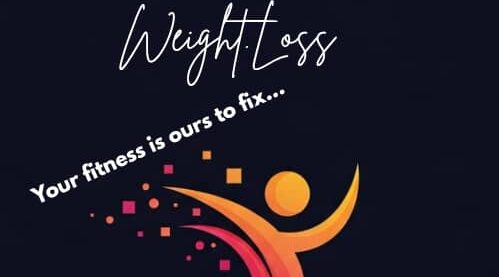Nutrition Know-how: Seven Simple Ways to Eat Healthier (with Strawberry Orange Sorbet Recipe)
The key to better health is learning the difference between healthy and unhealthy nutrients. The choices we make greatly affect our health. Making a few simple healthy and nutritious changes in our dietary choices can have a profound and positive impact on our health, well-being, energy levels, and life span. For instance . . .
o Healthy proteins provide the amino acids our bodies require to build and repair lean body mass (like muscles, skin, hair, and nails), and are low in saturated fat, cholesterol, and chemicals. Good sources include wild salmon, beans, legumes, soy products (tofu, tempeh, TVP), seeds (sunflower, pumpkin), nuts (walnuts, almonds, peanuts), and peanut butter.
o Unhealthy proteins are loaded with saturated fat, cholesterol, hormones, or antibiotics (like beef, lamb, bacon, and sausage). While they give your body the needed amino acids, they also clog arteries and compromise your immune system.
o Healthy fats are unsaturated fats (mono and poly), omega 3, and omega 6 fatty acids. Good sources of these fats include extra virgin olive oil, canola oil, ground flax seeds, and walnuts. They help your body absorb fat-soluble antioxidant micronutrients like vitamins A, E, D, and K, and lycopene.
o Unhealthy fats are saturated fats and trans fatty acids (trans fats), like butter and margarine. These fats contribute to heart disease, stroke, high cholesterol and triglyceride levels, hypertension, and obesity.
o Healthy carbohydrates are high in fiber and are considered complex carbohydrates. Good sources include rolled oats, brown rice, whole wheat, broccoli, squash, green leafy vegetables, sweet potatoes, beans, and whole fruit. These help lower cholesterol, aid digestion, regulate blood sugar and insulin levels, and reduce caloric intake.
o Unhealthy carbohydrates are high in sugar and are called simple carbohydrates, like candy, white bread, sodas, ice cream, cake, and cookies. These spike blood sugar and insulin levels, and increase caloric intake (they are considered empty calories).
Eating nutrient-dense foods that are high in antioxidants, phytochemicals, and fiber helps the body function optimally, promote overall well-being and improve digestion. These nutrients also help fight and prevent heart disease, cancer, and diabetes, strengthens the immune system, slows the aging process, increases energy, and improve cognitive performance.
Additionally, as we age our appetite lessens, making it even more critical to choose foods wisely. When every bit counts, picking foods with the highest nutritional profile is more important than ever.
An easy way to make your nutritional choices is to look for foods that are bright in color, for they usually contain more beneficial vitamins, minerals, and phytochemicals. For example, red and pink grapefruit have the heart-healthy cancer-fighting antioxidant phytochemical called lycopene while white grapefruit does not. Here are seven more simple ways to start eating healthier.
1. Switch from iceberg lettuce to romaine lettuce. Romaine lettuce has more vitamins and minerals like vitamins A and C, thiamine, riboflavin, calcium, and potassium. It also has more fiber than iceberg lettuce.
2. Eat brown rice instead of white rice. Brown rice naturally has more fiber and riboflavin, and fewer sugars than white rice. It is digested slower and is more filling.
3. Switch from white bread to whole-wheat or whole-grain bread. Whole-wheat and whole-grain bread has more fiber, iron, and potassium. Slice per slice, they are more filling and satisfying than white bread.
4. Drink iced teas (black, green, and herbal) instead of sodas. Black, green and herbal teas provide antioxidants and phytochemicals that enhance your health. Unlike sodas, you can control the sugar content when brewing your own iced teas.
5. Choose whole-grain or whole-wheat cereals with bran instead of sugar-coated cereals. Whole-grain cereals and whole-wheat cereals with bran naturally have more protein, fiber, calcium, iron, vitamin A, thiamin, riboflavin, and niacin than sugar frosted cereals. Besides having less sugar, they are metabolized slower and are more filling. So you have more energy during the day and you will not get hungry right away.
6. Switch from cows’ milk to fortified soymilk. Soymilk contains no cholesterol or hormones and is extremely low in saturated fat. It also provides isoflavones and other beneficial phytochemicals that promote good health. Fortified soymilks also contain easy-to-absorb calcium, vitamins D and B6, and some even add extra antioxidants (like vitamins A, C, and E), folate, and omega-3.
7. For dessert, have frozen fruit sorbet instead of ice cream. Frozen fruit sorbet is fat and cholesterol free and has more fiber. It is also loaded with antioxidant vitamins A and C and contains beneficial phytochemicals.
To get you started, try Monique N. Gilbert’s deliciously nutritious homemade sorbet recipe. It’s cholesterol-free, and high in antioxidants, phytochemicals, and fiber.
Strawberry Orange Sorbet
1-1/2 cups frozen strawberries
1/3 cup orange juice
1/3 cup fortified soymilk
2 tablespoons canned pumpkin
1 tablespoon honey
Blend in a food processor or blender for 1-2 minutes, until smooth and creamy. Place in the freezer until ready to serve.
Makes about 2 servings
Copyright © Monique N. Gilbert. All rights reserved.


